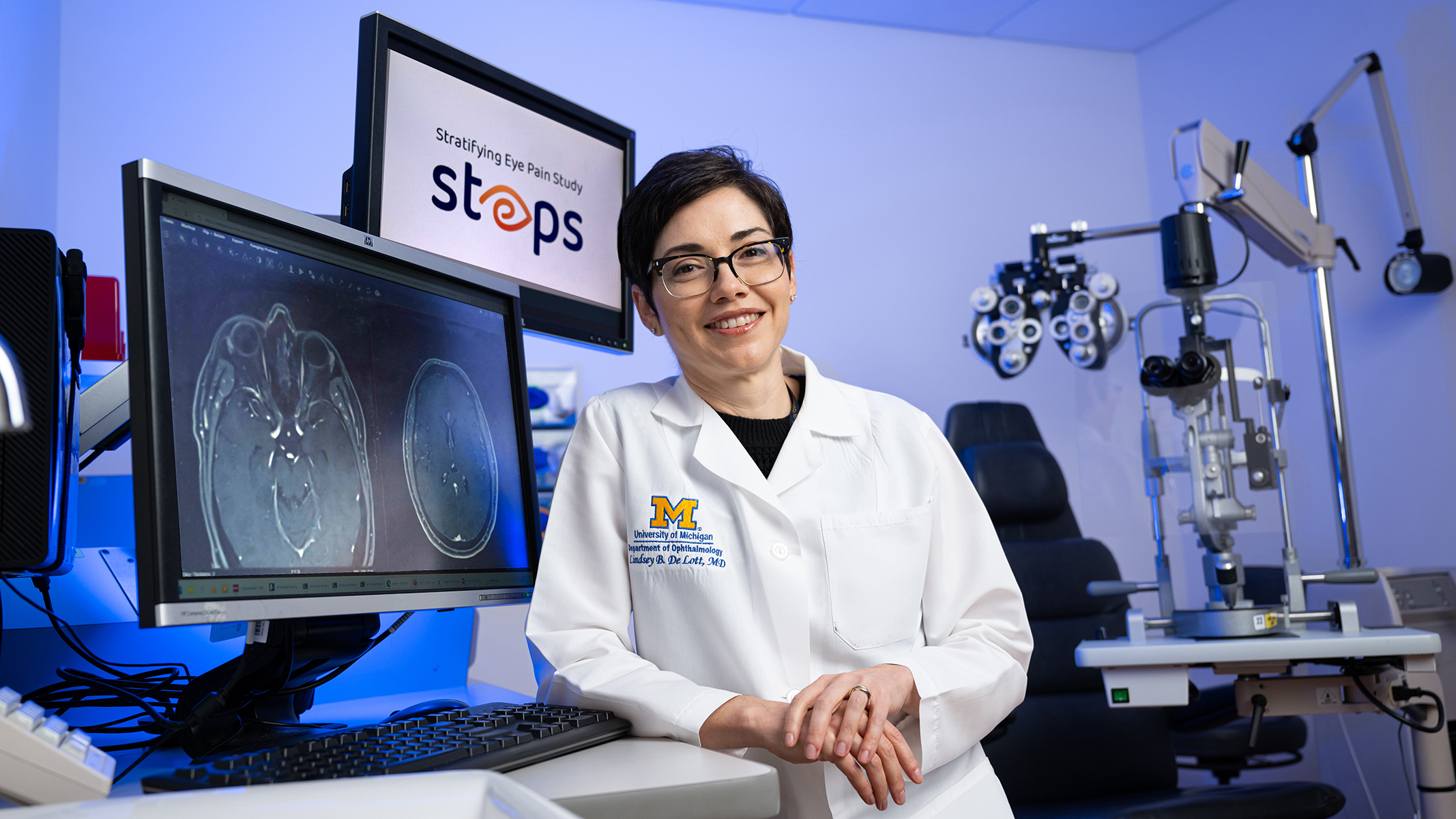
2 minute read
In Search of the Source of Eye Pain
At some point in their lives, between five and 15 percent of Americans will experience chronic ocular surface pain (COSP). Sometimes occurring in combination with dry eyes, COSP symptoms, including burning, aching and irritation, can compromise daily function and quality of life.
Understandably, the first stop for patients experiencing eye pain is an ophthalmologist. But for more than half of COSP patients, conventional treatments targeting the surface of the eye—the perceived source of the pain—are not effective.
Kellogg neuro-ophthalmologist Lindsey De Lott, M.D., M.S., is exploring the possibility that for those patients, the pain in their eyes may actually originate in their brains.

Research in other chronic pain conditions like fibromyalgia has shown that some patients experience pain in one or more areas far from the primary site, as well as non-pain symptoms such as fatigue, sleep disturbance and mood disorders.
“The theory is that when certain pathways in the brain are amplified or become dysfunctional, they can cause pain in seemingly unrelated areas,” Dr. De Lott explains. “We refer to this as ‘nociplastic pain,’ and we see anecdotal evidence that this may be the case for some COSP patients in our clinic.”
As Principal Investigator on an NIH R01 grant, Dr. De Lott will lead the most comprehensive study to date of the clinical, neurobiological and treatment response features of pain in a group of COSP sufferers. “A study of this magnitude could only be possible in collaboration with pain experts like my colleagues in the U-M Chronic Pain and Fatigue Research Center,” she notes.
The project begins with a survey conducted with about 200 patients. Validated patient-reported outcome measures will capture their perceptions and experiences living with pain and other non-pain symptoms such as fatigue and mood changes. Surveys will be followed by comprehensive ocular exams to assess eye health and identify any relevant conditions. This data will be used to identify a subset of patients to undergo more intensive examinations, including multimodal sensory testing of the eyes and sites remote from the eyes, and functional brain magnetic resonance imaging (MRI) of regions implicated in their pain.
“This study has the potential to fundamentally change how ocular pain syndromes are diagnosed and treated,” says Dr. De Lott. “We hope to lay the foundation for the development and clinical testing of tailored treatments to bring relief to patients experiencing chronic eye pain.”










